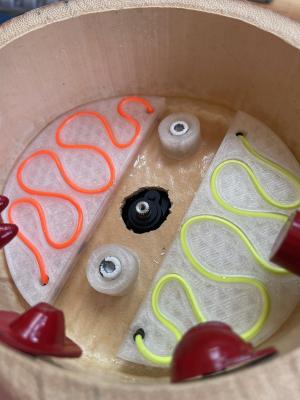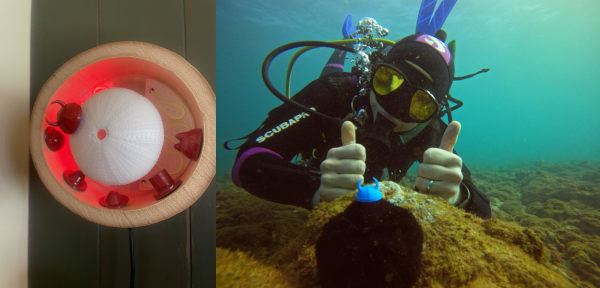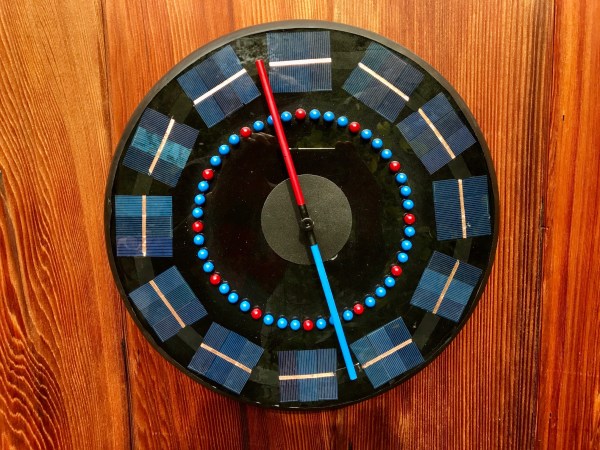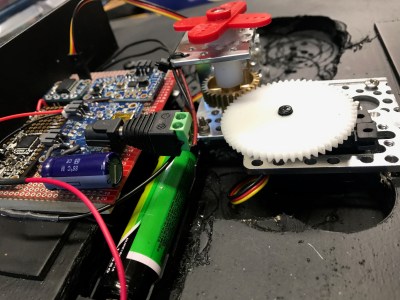The rise of 3D printing has given us incredible things, from awesome tchotchkes to intricate chocolates to useful things like spare body parts. But none has been so vital to comedy as say, printing hats for sea urchins. That’s right, sea urchins like to cover up with various things and will happily don, say, a 3D printed hat if presented the opportunity.
 So anyway, this is a tide clock that uses a printed sea urchin and various hats to tell the time until/between low and high tide. How? It uses the position of a given hat relative to a couple nOOds LED strands, one for high tide and another for low.
So anyway, this is a tide clock that uses a printed sea urchin and various hats to tell the time until/between low and high tide. How? It uses the position of a given hat relative to a couple nOOds LED strands, one for high tide and another for low.
Inside the large bamboo enclosure is an TTGO that fetches cheaply-obtained tide information and displays it on the screen. The TTGO also controls a servo that moves the sea urchin around. As it moves, a magnet in the urchin’s head (?) attracts the next hat.
Before settling on the current design, [rabbitcreek] experimented with both a sand dollar and a sea urchin skeleton. All the files are available if you want to whip up your own.
This isn’t [rabbitcreek]’s first foray into tide clocks. Here’s a solar number that should last for years.















